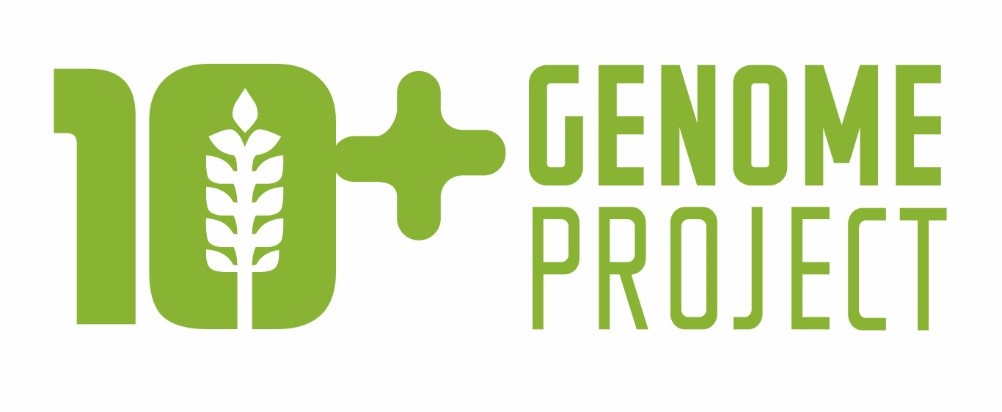The Wheat 'Pan Genome'
Wheat
With more than 215 million hectares planted annually, wheat is the most widely cultivated cereal in the world. Annual global wheat trade is higher than that of maize and rice combined. Wheat is also the most important source of protein and provides around 20% of human caloric intake globally. With a growing population, wheat production needs to increase by around 60% in the next 40 years to meet demands; therefore, the challenges for wheat breeders and growers are tremendous. Continued development of genomic resources to support wheat research and breeding are at the forefront to support this global challenge.
2017 was a remarkable year and represented a significant step forward for wheat genomics. In 2017, highly continuous genome assemblies were released for two of modern wheat’s ancestors, wild emmer wheat (accession “Zavitan”)1 and Aegilops tauschii2. Genome sequences for domesticated wheat, including both tetraploid wheat (durum cultivar “Svevo”) and hexaploid wheat (bread wheat landrace “Chinese Spring) were also well underway, with improved genome sequences being released3,4. In July 2017, the International Wheat Genome Sequencing Consortium (IWGSC) also announced the most comprehensive and contiguous assembly of the “Chinese Spring” hexaploid wheat genome. However, these genome assemblies are only the first step towards understanding the diversity available to wheat scientists and breeders. It is likely that one of the key reasons why bread wheat has such a huge geographic range and has been adapted into so many environmental conditions is that the wheat genome is highly plastic and tolerant of a huge level of mutation and introgression.
Modern wheat cultivars carry a wide range of different genes associated with important traits, such as increased yield and disease resistance. It is impossible to capture all of these genes with a single genome sequence; therefore, additional genome sequences are required. Sequencing multiple wheat genomes will allow for the full complement of wheat genes to be identified, also called the ‘pan genome’. The ‘pan genome’ can be subdivided into two components, the ‘core genome’ and the ‘dispensable genome’. The ‘core genome’ encompasses genes that are common across most or all wheat, while the ‘dispensable genome’ includes genes that are present in only a subset of individuals or are unique to an individual. By capturing the ‘pan’, ‘core’, and ‘dispensable’ genome, wheat researchers and breeders will be better equipped to identify genes that can be used for improving wheat production and quality. It will also aid our understanding of gene-models and regulatory motifs.
Wheat is the most important source of protein and provides around 20% of human caloric intake globally.
References
1) Avni, R., M. Nave, O. Barad, K. Baruch, S. O. Twardziok, H. Gundlach, I. Hale, M. Mascher, M. Spannagl, K. Wiebe, K. W. Jordan, G. Golan, J. Deek, B. Ben-Zvi, G. Ben-Zvi, A. Himmelbach, R. P. MacLachlan, A. G. Sharpe, A. Fritz, R. Ben-David, H. Budak, T. Fahima, A. Korol, J. D. Faris, A. Hernandez, M. A. Mikel, A. A. Levy, B. Steffenson, M. Maccaferri, R. Tuberosa, L. Cattivelli, P. Faccioli, A. Ceriotti, K. Kashkush, M. Pourkheirandish, T. Komatsuda, T. Eilam, H. Sela, A. Sharon, N. Ohad, D. A. Chamovitz, K. F. X. Mayer, N. Stein, G. Ronen, Z. Peleg, C. J. Pozniak, E. D. Akhunov and A. Distelfeld (2017). “Wild emmer genome architecture and diversity elucidate wheat evolution and domestication.” Science 357(6346): 93-97.
2) Zhao, G., C. Zou, K. Li, K. Wang, T. Li, L. Gao, X. Zhang, H. Wang, Z. Yang, X. Liu, W. Jiang, L. Mao, X. Kong, Y. Jiao and J. Jia (2017). “The Aegilops tauschii genome reveals multiple impacts of transposons.” Nature Plants 3(12): 946-955.
3) Clavijo BJ, Venturini L, Schudoma C, et al. “An improved assembly and annotation of the allohexaploid wheat genome identifies complete families of agronomic genes and provides genomic evidence for chromosomal translocations”. Genome Research. 2017;27(5):885-896. doi:10.1101/gr.217117.116.
4) Zimin, A. V., D. Puiu, R. Hall, S. Kingan, B. J. Clavijo and S. L. Salzberg (2017). “The first near-complete assembly of the hexaploid bread wheat genome, Triticum aestivum.” GigaScience 6(11): 1-7.

